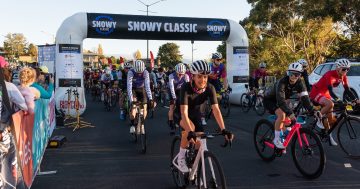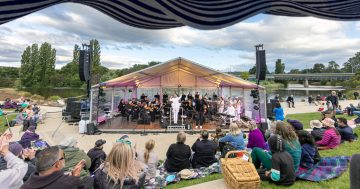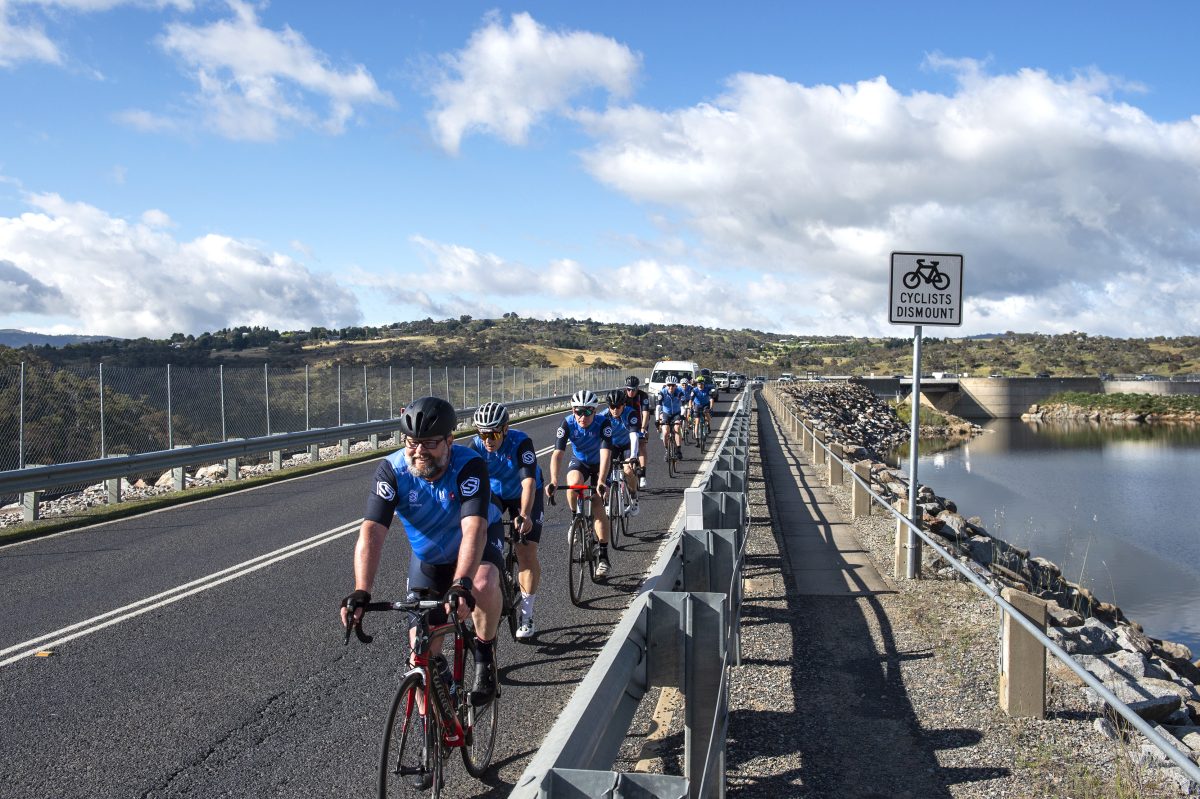
The Hartley Cycle Challenge brings together people from all different walks of life to do something for a good cause. Photos: Securus.
If you’ve ever wondered what you’d put yourself through for charity, there’s a great way to find out: it’s called the Hartley Cycle Challenge. Each year, cyclists travel 315 km over three days through mountainous terrain to help raise funds for people with disabilities in the ACT.
Established in 1962, Hartley Lifecare has grown from its original learning facility and therapy support service to helping over 100 clients in more than 37 homes across the Territory.
This year, the non-profit is using the funds raised by the event to rebuild its Hartley Court facility in Hughes, which supports up to nine people with complex disabilities and has two overnight respite beds helping up to 60 people a year.
Securus managing director and long-time challenge participant Patrick Campbell-Dunn said he first got involved in the event because of his uncle’s involvement in disability initiatives. On the weekend, he’d join him in helping people with varying levels of disability to play basketball, which made quite the impression on Patrick as a young man.
“The experience I had growing up normalised it, but a lot of my peers wouldn’t necessarily have had much interaction with disabled individuals, and may find it quite confronting to interact with them,” Patrick said.
“That’s what’s so awesome about this event, it doesn’t just raise funds but also awareness of people with disabilities, which is just as important.
“It’s so much fun because it brings together all these people from different walks of life to stop, focus and do something as a group,” he added.
While the preparation for the event is arduous, Patrick said the lead-up is almost the best part of the event. He said that for three to six months beforehand, participants should be riding over 200 km every week, which equates to five or six hours of riding every weekend.
Teams are often split up into two groups, one for the faster riders who like to do the challenge on a more individual basis, while the rest work together to make it to the finish as a group. Every night the teams sleep together in tents, which has its own hazards.
“Sports gels are eaten throughout the journey, because they’re really useful while you’re riding. But afterwards, your guts don’t necessarily digest all the sugars particularly well so the accommodation can stink for lack of a better word. So there’s definitely a couple of smelly tents in the evenings,” he said.
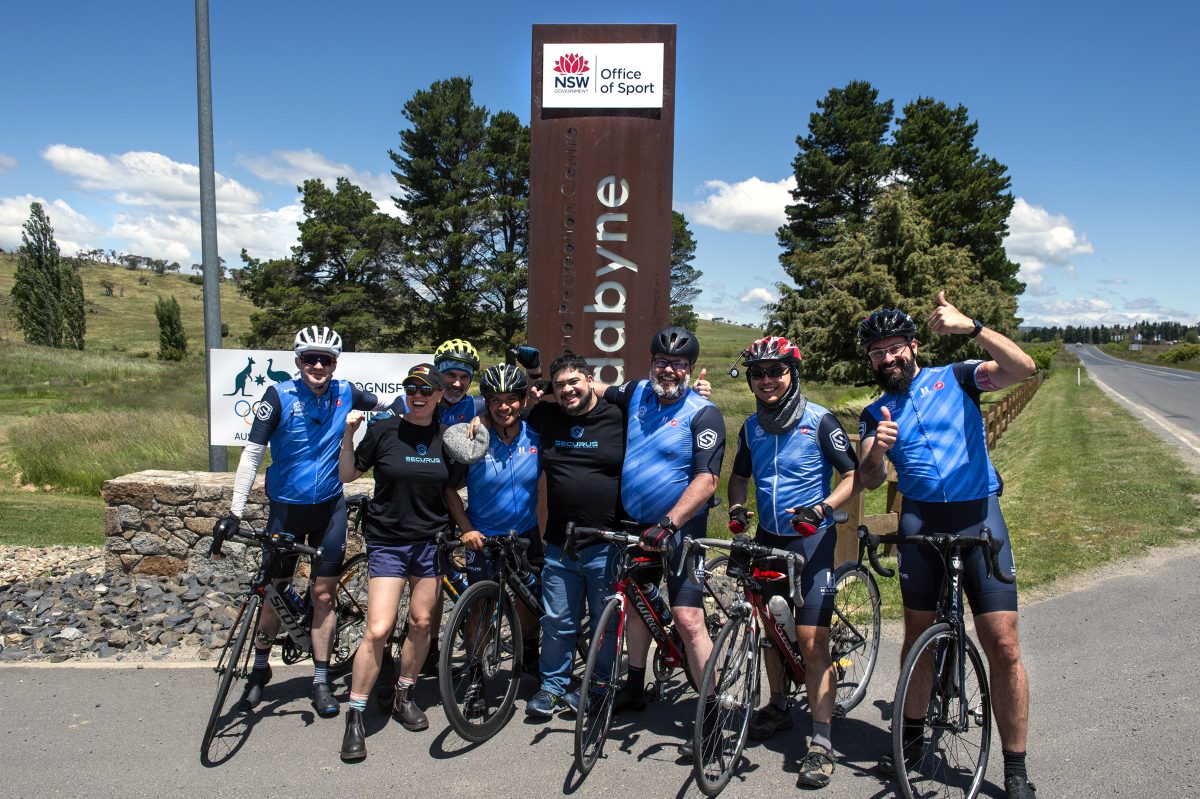
Patrick said there’s an “immense feeling of relief” when the end is finally reached.
However, according to Patrick, everyone is satisfied when you ultimately reach that end goal.
“It’s an immense feeling of relief. You just sit there because your legs don’t have to keep moving anymore. Many of us just park ourselves on the grass and stare up at the sky, before replenishing with some food and a cold drink,” he said.
“What’s pretty cool from all that is the friendships you make, so most of us know each other quite well. New people come along every year and they become part of it and hopefully stick around.
“But it’s certainly a spirit of we’re going to finish it together and we do nurse each other through the journey, especially the older and more injured riders.”
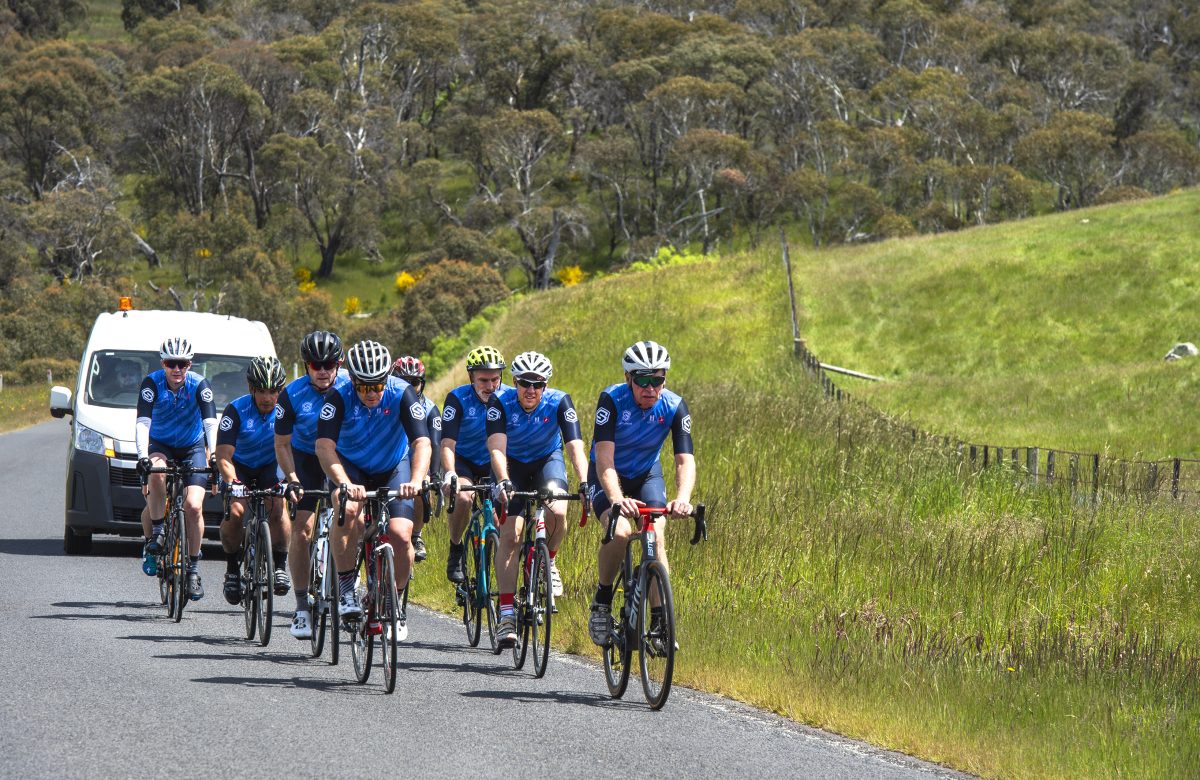
The riders climb up to 2000 m on their first day.
Before the riders line up and begin the race, they check in on Friday night to make sure their bike won’t have a flat tire in the first two minutes and so they get plenty of rest.
They rise at 6 am on Saturday to figure out what they can put in their stomach that won’t come back up as they hit the first hill, and get ready to pedal from 7 am in the freezing conditions of the Jindabyne township.
“The first day you got 137 km and about 100 km from the start you have to go up Belloca Hill, which is nicknamed ‘the wall’ because it has a crazy gradient of something like 22 per cent,” Patrick said.
“It’s only 3 km long. But since you’re going up 100 m of elevation, if you lose balance and have to put your foot down on that stretch, you’re not going to get back on your bike unless someone pushes you.”
On the first day, they climb over 2000 m, which is nearly the same amount done on the second day’s 85 km stretch up to Charlotte’s Pass. Patrick says in previous years there’s still a been a bit of snow on the ground, which doesn’t make the continuous uphill slog of the day any easier with the “high-altitude bombers”.
“There’s a bunch of really ferocious magpies that just go at you repeatedly, and we’ve had plenty of people fall off their bike halfway up the hill who have to walk the rest of the way,” he said.
For more information on the challenge and how to donate, visit the Hartley Lifecare website.
Original Article published by James Day on Riotact.







